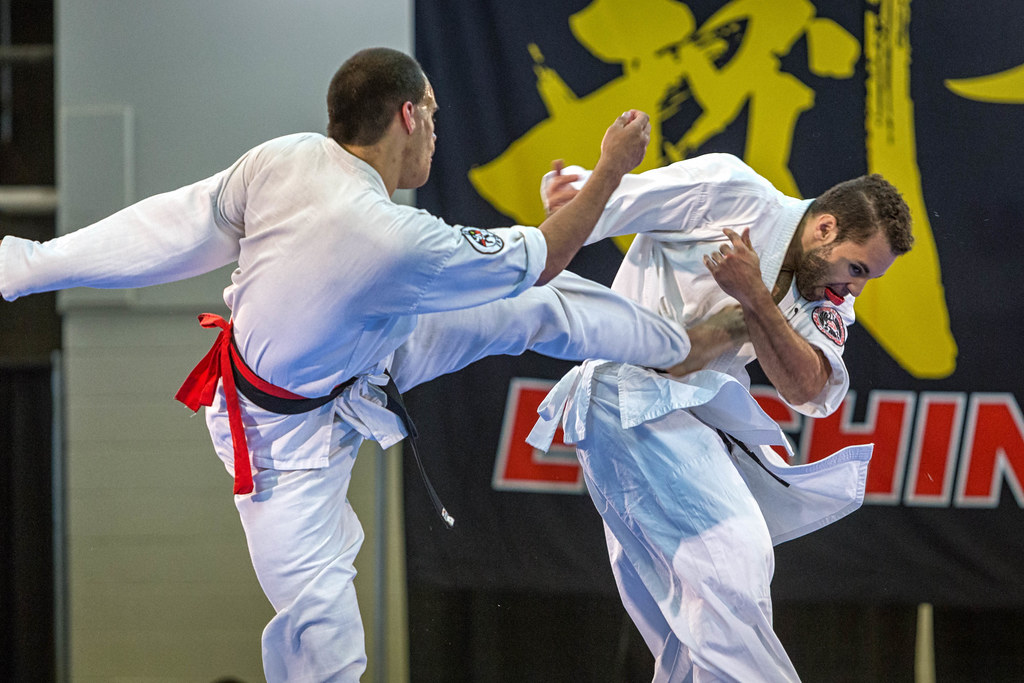


Matches will consist of one 5-minute round for adults (under brown belt), one 6-minute round for brown/black belts and one 5-minute rounds for kids. Win will be awarded by points, submission or knockout. The main referee will be in charge of safety, flow of the fight and break up situations with rule violation. The scoreboard will reflect the score as it goes along. Three judges will keep a scorecard and be on the side out of main view. There is no maximum number of points to win. No slamming while in a submission this will result in DQ. If a submission is in the process of being applied and both fighters stand up in an attempt to escape or secure the submission, the fighters will break up and the match will restart standing. The referee will encourage them to advance the position or be stood up. The match will restart standing if no position change or no attacks are being made, this must be felt by the main referee. If one fighter is down through a valid technique, they can grab longer than three seconds and both sides of the body. There is no striking once an opponent is down. This means no guard pulling, falling to the floor voluntarily to engage there or performing a take down with no control over your balance. The only way an opponent can engage in newaza is through a valid sabaki takedown for 2 points. Same Sabaki rules for standing except no knees to the head. We are not calling this mma, wrestling, bjj, judo or jiujitsu, but newaza.

Future: accessible for future growth, setting a new foundation.Technique: rewarding technique over strength on the ground.Tradition: keeping the tradition of sabaki and the spirit of enshin.Safety: childrens’ 12 and under can only engage in osaikomi (holding).(an optional division with newaza is now available) If both fighters are grabbing each other, creating a stalemate, the referee will break them apart immediately. Encircling the opponent’s neck or torso from the front with two hands to pull him into a technique is not permitted. When grabbing from the front with two hands, both hands must reach from the same side of the opponent’s body. A fighter may not encircle the opponent’s leg with one arm, or hold the leg up with two hands. Hand must release hold after three seconds. All kicks to the legs and sweeps to the legs are allowed, with the exception of a direct blow to the front of the knee.Ī fighter may grab his opponent’s shoulder or gi (of arm or leg) for three seconds only while executing a technique. Kicks and strikes to the groin are not permitted. Hand or elbow strikes or head butts to the neck and face area are not permitted. In the event that the judge’s decision is tied and the referee calls a “draw,” then there will be a one minute overtime to decide the match. If the score at the end of the match is tied, the fighter with fewer penalties will be declared the winner. If both fighters have the same number of points and penalties, the match will go to a judges’ decision. The quarter-final and semi-final and final matches will consist of one 6 minute round for adults 18 and over one 5 minute round for children/teens under 18. All fighters must wear a karate gi (in good repair: with long pants, sleeves to the elbows, and belt). Taping the hands and feet is not permitted. Hand or foot guards are not allowed to be worn. This handicap will apply to the preliminary, quarter-final, semi-final and final rounds of the tournament.įighters are required to wear a mouthpiece and a groin cup. Any fighter who exceeds the upper limit of his weight division will be penalized in the following manner: for each pound he is over the limit for his weight division, one point will be awarded to his opponent at the start of the match. There will be a weigh-in at the meeting the night before the tournament. Attendance at this meeting is required, and must be considered when making arrangements for coming to the SABAKI CHALLENGE. There will be a mandatory meeting for all fighters and judges held the evening before the SABAKI CHALLENGE.
ROMANIA SABAKI CHALLENGE REGISTRATION
In order to be considered as a contestant in the SABAKI CHALLENGE, an applicant must submit their Application, Fighter Questionnaire, Medical Certificate, Proof of Medical Insurance, Photograph, Videotape and Registration Fee no later than the application deadline.


 0 kommentar(er)
0 kommentar(er)
